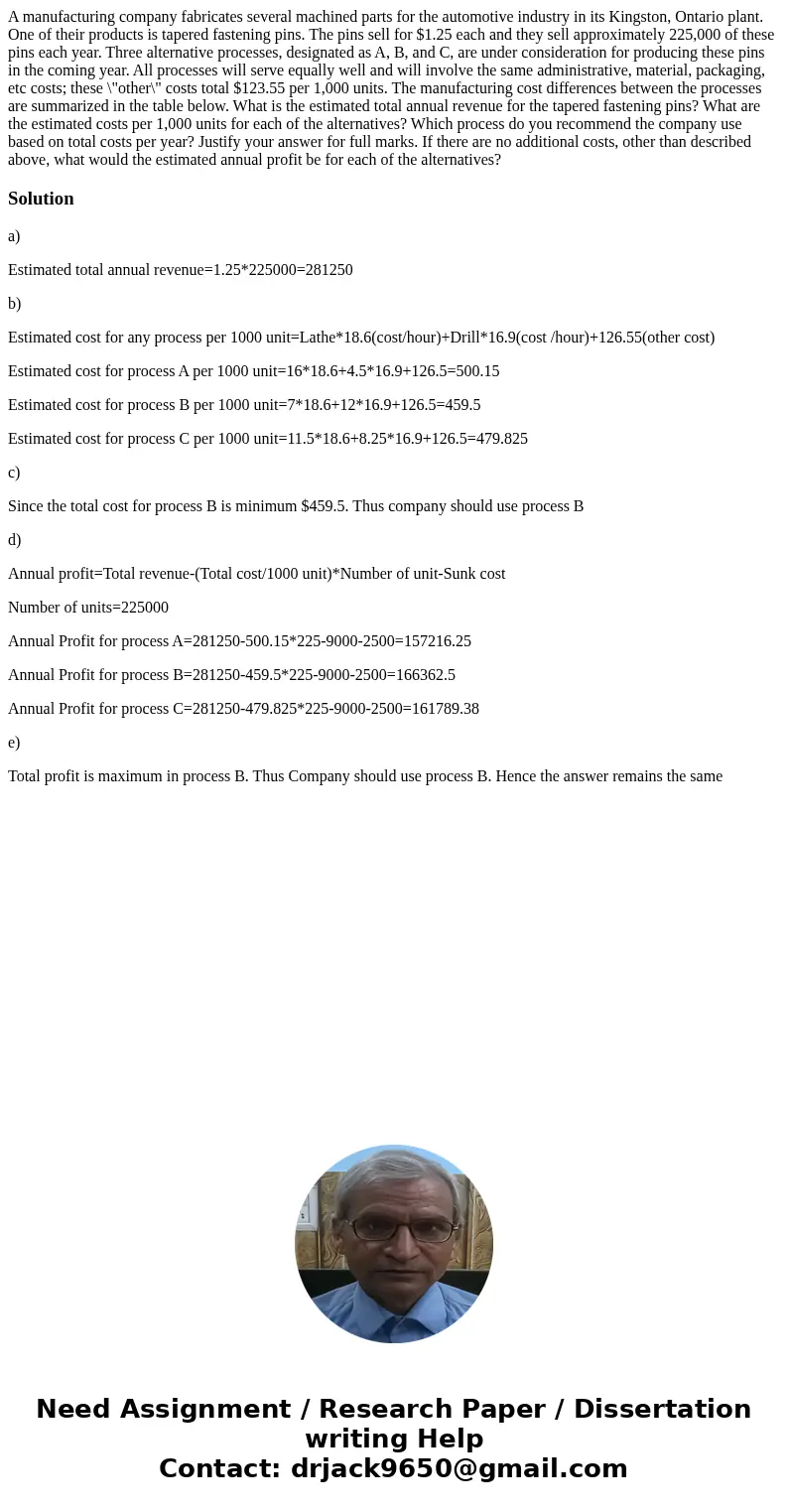A manufacturing company fabricates several machined parts for the automotive industry in its Kingston, Ontario plant. One of their products is tapered fastening pins. The pins sell for $1.25 each and they sell approximately 225,000 of these pins each year. Three alternative processes, designated as A, B, and C, are under consideration for producing these pins in the coming year. All processes will serve equally well and will involve the same administrative, material, packaging, etc costs; these \"other\" costs total $123.55 per 1,000 units. The manufacturing cost differences between the processes are summarized in the table below. What is the estimated total annual revenue for the tapered fastening pins? What are the estimated costs per 1,000 units for each of the alternatives? Which process do you recommend the company use based on total costs per year? Justify your answer for full marks. If there are no additional costs, other than described above, what would the estimated annual profit be for each of the alternatives?
a)
Estimated total annual revenue=1.25*225000=281250
b)
Estimated cost for any process per 1000 unit=Lathe*18.6(cost/hour)+Drill*16.9(cost /hour)+126.55(other cost)
Estimated cost for process A per 1000 unit=16*18.6+4.5*16.9+126.5=500.15
Estimated cost for process B per 1000 unit=7*18.6+12*16.9+126.5=459.5
Estimated cost for process C per 1000 unit=11.5*18.6+8.25*16.9+126.5=479.825
c)
Since the total cost for process B is minimum $459.5. Thus company should use process B
d)
Annual profit=Total revenue-(Total cost/1000 unit)*Number of unit-Sunk cost
Number of units=225000
Annual Profit for process A=281250-500.15*225-9000-2500=157216.25
Annual Profit for process B=281250-459.5*225-9000-2500=166362.5
Annual Profit for process C=281250-479.825*225-9000-2500=161789.38
e)
Total profit is maximum in process B. Thus Company should use process B. Hence the answer remains the same

 Homework Sourse
Homework Sourse